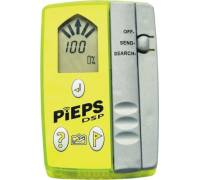I sure thought this email I got CC’d on yesterday from the National Ski Patrol was very interesting, and I wonder how many ski patrols, guide services and SAR units are scrambling, trying to get their radio and transceiver combos up to par. Basically their saying that the magnets in certain Motorola radios can switch the PIEPS DSP to ‘search’ when in transmit, and even turn it off. Sounds a little sketchy. Aye?
 PIEPS GmbH of Austria, one of several manufacturers of avalanche rescue transceivers, has become aware of a potential issue involving carrying the PIEPS DSP avalanche transceiver in close proximity to the Motorola Model GP340 radio transceiver. Although the GP340 radio is a European version, it is very similar to the Motorola HT750 series used in North America.
PIEPS GmbH of Austria, one of several manufacturers of avalanche rescue transceivers, has become aware of a potential issue involving carrying the PIEPS DSP avalanche transceiver in close proximity to the Motorola Model GP340 radio transceiver. Although the GP340 radio is a European version, it is very similar to the Motorola HT750 series used in North America.
Avalanche rescue transceivers are extremely sensitive devices, and can be affected by the magnet found in a radio speaker. If the radio, or even a speaker-microphone, comes in close proximity with the avalanche transceiver, magnetic fields are present that can activate magnetic switches in the PIEPS DSP to turn it off or change it from transmit mode to search mode. This is NOT a Motorola radio issue-this is NOT a radio frequency issue-it doesn’t matter if you are using VHF, UHF, or 800 MHz radios-it’s a magnetism issue that apparently affects other transceiver brands and models as well.


Motorola GP340 Motorola HT750
The manufacturers of avalanche rescue transceivers also caution users against wearing clothing containing permanent magnets (e.g. magnetic button closures, magnetic nametags) while operating avalanche rescue transceivers.
 The issue is being investigated and is of no immediate cause for alarm. It does not appear to affect transceivers that are carried according to the separation criteria already specified in the PIEPS DSP owner’s manual (at least 15 cm [6″] from other devices while in “send” mode, and 1.5 m [approx. 5 feet] while in “search” mode).
The issue is being investigated and is of no immediate cause for alarm. It does not appear to affect transceivers that are carried according to the separation criteria already specified in the PIEPS DSP owner’s manual (at least 15 cm [6″] from other devices while in “send” mode, and 1.5 m [approx. 5 feet] while in “search” mode).
However, the situation should serve as a reminder for all users of avalanche transceivers to read their owner’s manual, and observe the criteria specified for separation distance between their transceiver and other potential sources of magnetic interference, regardless of brand or model.

I’ve wondered at transcievers effecting compass readings. Anybody have any beta on transciever – compass interference?
I believe cell phones can also throw off transceiver signals, no?
Skiingthebackcountry.com did a couple articles about beacon interference. I don’t think the author tested compasses though. It seems the biggest problem was caused by GPS. However pieps was not the beacon used for the testing.
Renny Jackson did some tests on radios and transceivers following the death of patroller Paul Driscoll at Jackson Hole Ski Area years ago. There was interference during the search, as I recall, both from Driscoll’s radio, which was too close to his transceiver, as well as from the FM radio station. Renny’s solution, as I recall, was to make a pouch so the transceiver could be worn to the side, not next to the radio.
There also is recent discussion on TGR regarding iphones and transceivers and possible interference.
Thanks for all the input guys!